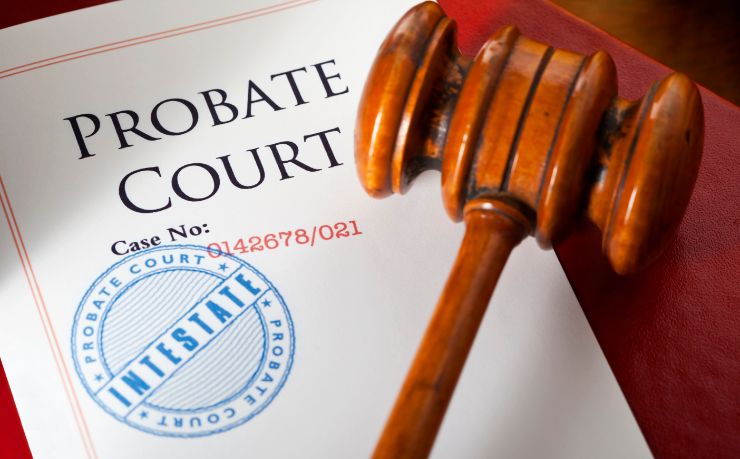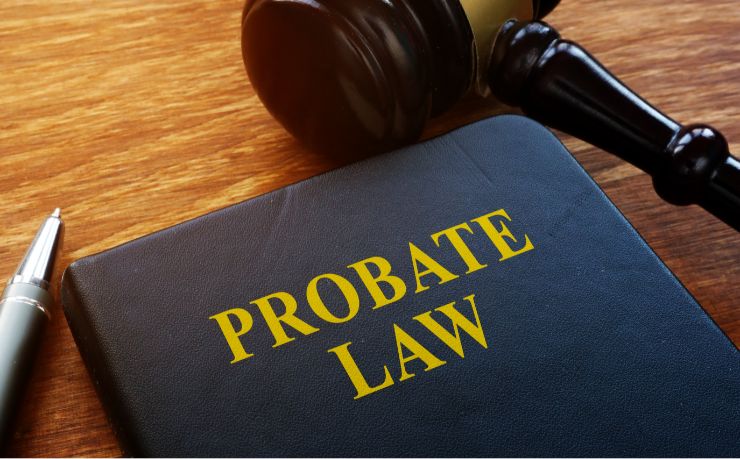Payable on Death (POD) and Transfer on Death (TOD) Accounts

The form of ownership determines how property will be managed during the owner’s lifetime and how it will be distributed at the owner’s death. Alternative methods of transferring property on death are sometimes known as “nonprobate transfers,” which include transfers made under California Probate Code §5000. If an account, e.g., a bank account, is payable-on-death (POD) or is a retirement account, e.g., an IRA or non tax deferred brokerage account, is transfer–on-death, with a designated beneficiary (TOD), at death title vests in the beneficiaries without the necessity for probate.
Using named beneficiary documents in an estate plan is an effective way to keep assets out of the long and sometimes costly probate process, making things easier on a person’s loved ones after he or she passes. However, unless a person makes such documents part of a comprehensive estate plan, he or she may end up causing confusion and hassle for his or her heirs and may pass contrary to the decedent’s actual wishes.
Estate planning is a combination of legally operative documents, asset titling, and beneficiary designations. It is important that these different parts work in concert with each other, rather than at cross-purposes. PODs and TODs may be useful in some situations, but careful attention must be paid to avoid unintended and unwanted results if they contradict an estate plan that’s already in place. It’s not that these accounts cannot or should not be used, it’s just they have to be coordinated carefully with the rest of the plan. If there is more than one child and you make a paid on death account in favor of just one, it’s bound to cause misunderstanding or even worse, disinheriting children not listed as beneficiary(ies).
That’s what happened in the recent Florida case of the Estate of Barbara Kester who died in 2011, with a will dividing up her property evenly among her five children. Separately, one daughter, Glenna, took possession of a CD and a credit union account as payable on death beneficiary or joint account holder with right of survivorship. The two sisters who were left out cried foul, but an appellate court ruled in favor of Glenna, concluding that she acted properly in divvying out the three assets per the beneficiary designations.
Payable on Death (POD) (Bank Accounts)
California courts regularly recognize the validity of payable-on-death accounts and allow them to avoid going through probate. This kind of account has been called the “poor man’s trust.” In California, you can convert almost any bank account into a payable-on-death account by filing forms with the bank designating a beneficiary to receive the funds when you die. This kind of account leaves you total control of the assets during your lifetime. You can change your beneficiary at any time and are free to leave as much or as little money as you like in the account. All you need to do is properly notify your bank of whom you want to inherit the money in the account or certificate of deposit. The bank and the beneficiary you name will do the rest, bypassing probate court entirely. It’s that simple.
As long as you are alive, the person you named to inherit the money in a payable-on-death (POD) account has no rights to it. If you need the money, or just change your mind about leaving it to the beneficiary you named, you can spend the money, name a different beneficiary, or close the account. All you need to do is fill out a simple form, provided by the bank, naming the person you want to inherit the money in the account at your death. As long as you are alive, the person you named to inherit the money in a payable-on-death account has no rights to it. You can spend the money, name a different beneficiary, or close the account.
Transfer on Death (TOD); Uniform Transfer-on-death Securities Registration Act
The rules are basically the same on TOD accounts. Every state except Louisiana and Texas lets you name someone to inherit your stocks, bonds, or brokerage accounts without probate. It works very much like a payable-on-death (POD) bank account. When you register your ownership, either with the stockbroker or the company itself, you make a request to take ownership in what’s called “beneficiary form.” When the papers that show your ownership are issued, they will also show the name of your beneficiary.
After you have registered ownership this way, the beneficiary has no rights to the stock as long as you are alive. But after your death, the beneficiary can claim the securities without probate, simply by providing proof of death and some identification to the broker or transfer agent. (A transfer agent is a business that is authorized by a corporation to transfer ownership of its stock from one person to another.)
The TOD beneficiary has no rights to the stock as long as you are alive. You can sell it, give it away, name a different beneficiary, or close the account. But after your death, the beneficiary can easily claim the securities without probate.
How Can They Go Awry?
- The first mistake is assuming that a person’s will can sufficiently sort out any discrepancies between the distribution of assets in the will and named beneficiary forms. The forms always take precedence over the will, so it is crucial that a person coordinate the documents.
- Inadvertent disinheritance/”over-inheritance” of beneficiaries. Intended beneficiaries can be inadvertently “disinherited” or “overly-inherited” by PODs/TODs in different ways, including the following:
- A POD/TOD may designate your children as the beneficiary at your death. But if one of your children predeceases you, grandchildren may be disinherited if the language of the POD/TOD agreement causes your deceased child’s share to go to your other, surviving children (who may “over-inherit”) rather than to the children of your deceased child.
- Inadvertent disinheritance (or “over-inheritance”) can also occur when a POD/TOD is used as a “Will substitute” to pass a certain asset to a particular beneficiary. For example: you have a bank account holding $5,000 and you want to leave $5,000 to your niece, so you simply name her as beneficiary of the account rather than going through the formality of naming her in your Will (or Trust). The potential problems with that approach are that you may not even own that account upon your death, or the value of the account may have radically changed — either more or less – in the meanwhile.
- PODs/TODs may cover so much of your total assets that there may be nothing left in your Estate (or Trust) to fulfill bequests contained in your Will (or Trust).For example, you may have dollar-amount bequests listed in your Will to your favorite charities (or to certain individuals) that cannot be fulfilled because your POD/TOD designations have diverted too much of your assets away from your probate estate, leaving insufficient funds to satisfy the bequests you intended. It does not matter how clearly you stated your intent in your Will to have assets go to those charities/individuals; if the assets are not available because they already passed to other beneficiaries, these gifts will legally lapse.
- Estate (or Trust) liquidity problems.When assets flow to the Estate (or Trust), they are generally readily available for payment of the deceased’s debts and expenses. If PODs/TODs cover so much of your total assets that there is not enough left to pay debts and expenses, this can create a headache for your Executor (or Trustee), who may have to chase down POD/TOD beneficiaries for contribution. Making things as easy as possible for one’s successors is often a goal in estate planning, and the creation of liquidity problems thwarts that goal.
- Direct distributions to minors and incompetents.Wills and Trusts are often drafted in a way that avoids direct distributions to minors and incompetents, in order to avoid a need for costly guardianship proceedings. When assets pass directly to minors or incompetents under PODs/TODs, this drafting protection is lost.
Minors are limited in inheriting money before they reach the age of majority, so it is a better plan to establish a trust and name the trust as the beneficiary of the asset until the minor turns a certain age. In that situation, the testator would also need to establish detailed instructions for the trustee on how to manage the funds for the minor until the minor has control over the funds him or herself, including such things as what are acceptable expenses for which the trustee can use trust funds. A person might also want to consider making the age that the trust funds are available to the trust beneficiary higher than either 18 or 21 years old. It is not uncommon for people at that age who suddenly come into a great deal of money to spend it foolishly.
Sometimes PODs/TODs are used to leave property to a trusted adult, with the idea that such adult will use the assets for the support of a minor or incompetent. This is a dangerous approach in that there are many ways it can go wrong — including some beyond the trusted adult’s control. For example naming a beneficiary who is expected to further distribute the money in the account to other beneficiaries but does not do so. There’s no legal obligation to do so.
- Not naming a secondary (contingent) beneficiary on POD account.In California, on the death of the sole account party or of the survivor of all of the account parties the heirs of a predeceased POD payee have no interest in the account. California Probate Code § 5302(b)(2)(A).
- Failing to name a beneficiary on IRA or other tax deferred investment.Sometimes people neglect to name a beneficiary or they name someone who dies before them and they fail to name a backup beneficiary. In all these cases, the IRA is treated as if it did not have a beneficiary.
When an IRA doesn’t have a beneficiary, the financial institution will look at its own contract with the IRA owner (the “custodial agreement”) to determine how that account will be distributed after the owner’s death. The terms of these agreements vary widely. Sometimes a surviving spouse is the default beneficiary; occasionally the account defaults to the children if the spouse is not alive. You can’t count on this arrangement, though. Most custodial agreements provide that the account is payable to the account owner’s estate.
What’s wrong with that? Here’s where those draconian tax rules come into play. For the most beneficial tax result, they require an IRA to have a “designated beneficiary,” and this can only be a human. That’s because “life expectancy” determines how quickly a beneficiary must take distributions from the IRA, and the Internal Revenue Code reflects the prevailing view that only humans have life expectancies.
Surprise! An estate does not have a life expectancy. Typically, a designated beneficiary can choose to take only the required minimum distribution, or RMD, each year. This is the minimum amount that the beneficiary must withdraw, based on the value of the account and the beneficiary’s own life expectancy. Taking only the RMD allows payments to be “stretched” out over time, so the account can grow income tax deferred (or with a Roth, tax free) for as long as possible.
But no designated beneficiary generally means there is no option to stretch out RMDs over a life expectancy. And, unless the account agreement provides otherwise, the IRA will be payable to the owner’s estate. In that case it will pass pursuant to the terms of the will if there is one, or according to state law that determines how property passes when someone dies without a will.
- An account owner names his/her estate as beneficiary.Too often, rather than leaving the designation blank, an account owner will name his/her estate, thinking it would be convenient to let his/her will control how the account is distributed. Wrong!
If the account is a Roth IRA, all funds must be withdrawn within five years. For a traditional IRA the same rule applies unless the former owner died after April 1 of the year he or she would have turned 70½ – the age at which a traditional IRA owner must begin taking required minimum distributions each year. In that case, distributions can be taken out over the account owner’s remaining life expectancy (based on IRS tables). Generally this is more than five years, but it may be substantially less than the life expectancy of the person for whom it was intended.
Naming your estate can be worse than naming no beneficiary at all. Any time an IRA passes to an estate, whether by designation or by default under the account agreement, it opens a whole new can of worms. Again, it eliminates the ability to stretch out distributions. But that isn’t even the worst thing that could happen.
When there is a designated beneficiary, IRAs get special protection from creditors of the person who died. That’s not true when the IRA passes through an estate. In that case, it becomes available to pay the decedent’s final bills. This can be a triple whammy: The funds get scooped up by creditors to pay bills; the funds used to pay the bills are subject to income tax; and the estate gets stuck with that bill.
- Forgetting to update the beneficiary forms after major life events such as marriage, divorce, births and deathsIt is tempting to forget about such forms after filling them out, but it is crucial that a person review such forms regularly to ensure that the documents still reflect his or her wishes and do not accidentally leave out someone he or she wanted to include or that someone who is no longer in the person’s life inherits through the documents. For example, when a person gets a divorce, it is a good idea to name a different beneficiary for life insurance policies and retirement accounts than the ex-spouse, such as a trust for any children from the marriage. In fact, state law may automatically void such designations upon divorce.
If you wish to gain more information including California probate please contact me for a free consultation. I will spend time with you to answer your questions. From my office in Southern California, I represent families in all Southern California counties, including Imperial County, Los Angeles County, Orange County, San Bernardino County, San Diego County, others spread across the state and interested parties outside California.
To schedule a consultation, call me toll free at 800-575-9610 or locally at 760-989-4820. I enjoy meeting in person whenever possible, but am also available via Skype or through my online contact form.
Disclaimer: This article is intended to provide general information. The content of this publication is for informational purposes only. Neither this publication nor its author is rendering legal or other professional advice or opinions on specific facts or matters. No attorney-client relationship is created by this advisory, nor by any response to the information herein, unless and until a conflicts review has been conducted by William K. Sweeney, and a written agreement containing all terms of representation has been signed.
Copyright © William K. Sweeney, Attorney at Law. All rights reserved.







